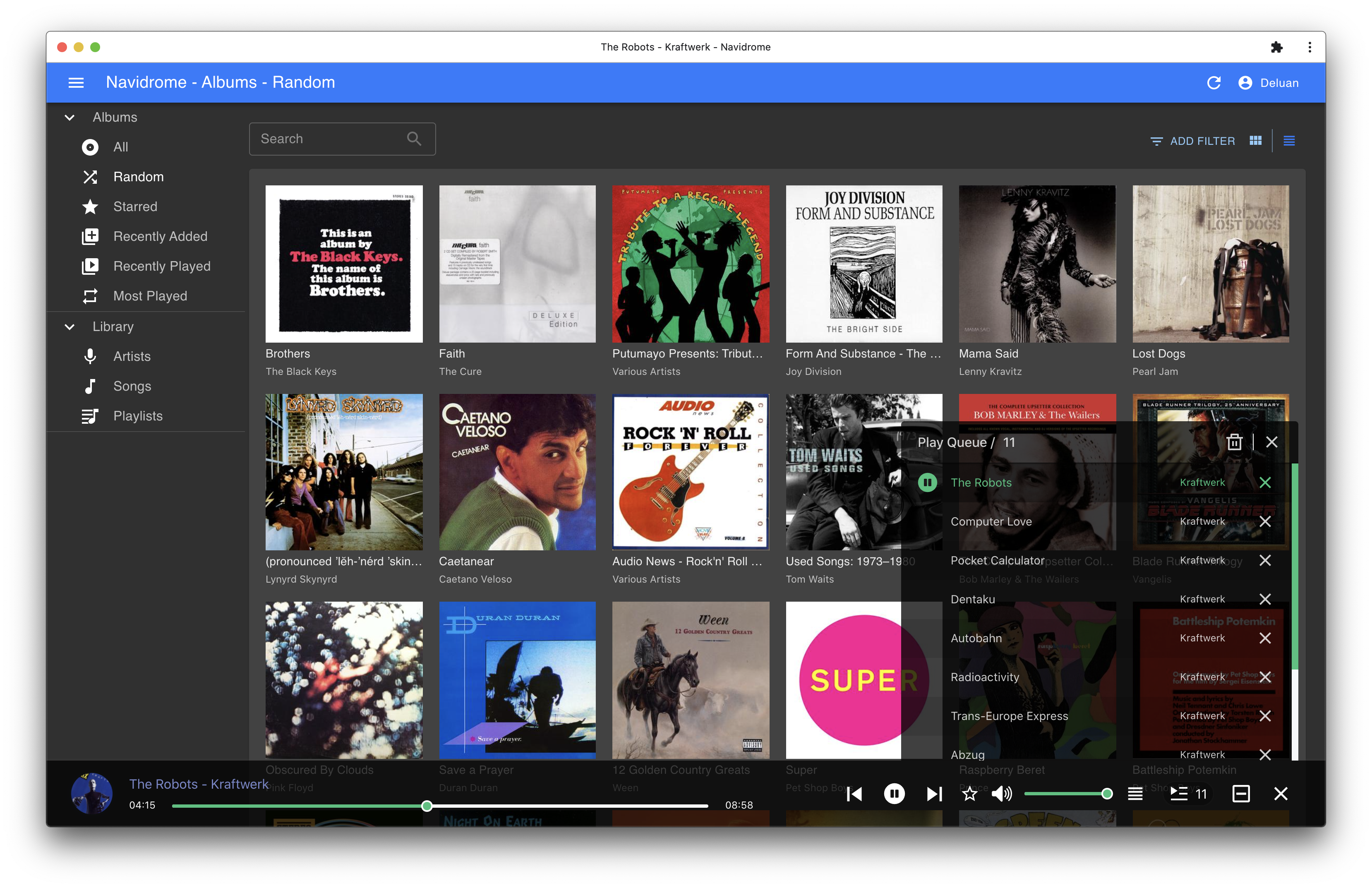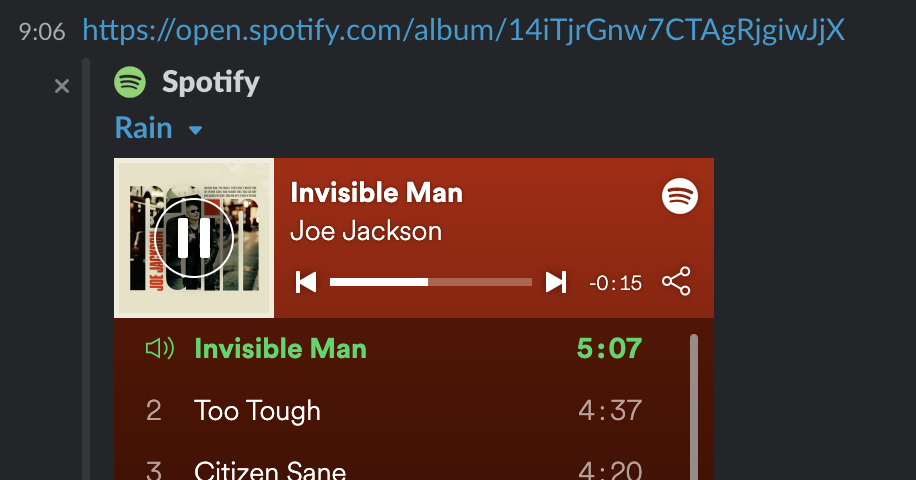Google Summer of Code 2021
Introduction
Navidrome started in February 2016 as a modern and lightweight alternative to Subsonic: written in Go/React, implementing the subsonic API and thus compatible with all the subsonic clients in the world, licensed under GPL3, … Being relatively young, it does come/use modern development practices like continuous integration, a comprehensive testsuite, a relatively clean codebase, automatic dependency upgrades, automatic linting/CI/static analysis/… on each pull-request, comprehensive documentation … It recently gained popularity due to the decay of Subsonic/Airsonic, and currently has more than 4M downloads of its docker image, and had its binaries downloaded more than 12k times.

A demo version is available as well: https://demo.navidrome.org
Mentors and Contacts
We’re using discord for communications, feel free to join.
As for the mentors:
- Deluan Quintão (ET): deluan – @deluan
- Julien Voisin (CET): jvoisin – @dustriorg
Development methodology
The main repository is hosted on Github, which is also used for tracking bugs and running the continuous integration. The main communication medium is Discord, along with X for announcements, and Reddit as general purpose forum. The usual way to get code in is to submit a pull-request, which will be reviewed by the community and merged. Adding some tests might of course speed up this process.
Instructions for students
Students willing to take part in the Google Summer of Code 2021 with navidrome should send a couple of pull-requests, to demonstrate that they’re both motivated and capable of writing code and contributing to the project.
Tech stack
- Server:
- Frontend (WebUI)
Recommended steps
- Read Google’s instructions for participating
- Grab any project from the list of ideas that you’re interested in (or even suggest your own!).
- Write a first draft proposal and ask one of the mentors to review it with you.
- Submit it using Google’s web interface.
Student proposal guidelines
- Keep it simple enough to fit in no more than a couple of pages. Try to be clear and concise in your writing.
- Try to split GSoC period into tasks, and each task into subtasks. It helps us to understand how you plan to accomplish your goals, but more importantly, it’ll help you to understand the task deep enough before starting, and prioritize important things to do first.
- Please, note, how much time a day/week you are able to spend on this project. We do expect something between 30h and 40h.
- Submit your proposal early, not at the last minute!
- Feel free to choose a “backup” idea (the second task you want to do), so that conflicts (two students for one task) can be resolved.
Ideas
1. Media sharing
One of the nice features of Subsonic is its ability to generate a sharing link for a track/album/artist/playlist to send to friends, so that they can listen/download the music without having an account on your instance. This is a nice alternative to youtube links to share music. A nice way to implement this would be to have a table of shares, with a shorturl as ID. The table would store a reference to what is being shared. This shorturl would be used by a public endpoint. We would also need a standalone player similar to what is provided by Spotify when you share music through their service. Ex:

Steps
- Add a table for shares
- Add a way to create shares in the UI
- Implement the Subsonic API related endpoints: getShares, createShare, updateShare and deleteShare
- Add a standalone player (could be based on our current React Player)
Details
- Skill level: Medium
- Required abilities: Go and willing to learn a bit of React
- Expected outcome: Ability to share music with friends.
Links and further reading
2. Jukebox mode
Some servers can be run in “jukebox” mode where the music is played directly on the server’s audio hardware, ex: mpd and Subsonic. A tricky part of this task might be to properly expose the “jukebox client” in the WebUI interface, as the current react-music-player used by Navidrome would have to somehow control the jukebox (via API) instead of the browser’s Audio component.
Steps
- Implementing a minimal subsonic client in go to connect to the server
- Implementing an audio output for the subsonic client
- Implementing the frontend part to select the jukebox mode and control the subsonic client
- Implementing the Subsonic API’s
jukeboxControlendpoint
Details
- Skill level: Hard
- Required abilities: Go and React, a bit of UX would be nice
- Expected outcome: Ability to play music from the device running navidrome.
Links and further reading
- https://github.com/deluan/navidrome/issues/364
- https://airsonic.github.io/docs/jukebox/
- http://subsonic.org/pages/api.jsp#jukeboxControl
3. Google home/alexa integration
Nowadays, tech-oriented people tend to have a home assistant, and thus might want to be able to use it to control their subsonic instance. Since there is already the subsonic API to perform actions, this task on “only” a matter of writing the glue between Alexa/Google home and the API. Some actions might require a bit more than glue, for example, to play specific tracks/albums.
This task can be nicely paired with the jukebox one.
Steps
- Implementing the glue between Alexa/Google home and the Subsonic API
- Implementing the frontend part to configure this machinery
Details
- Skill level: Hard
- Required abilities: Go, having an Alexa/Google Home is a plus, but worse case we can send the student a device.
- Expected outcome: Ability to play/pause/next/previous the music via a home assistant
Links and further reading
- https://github.com/deluan/navidrome/issues/682
- https://developers.google.com/assistant/
- https://developer.amazon.com/en-US/alexa/alexa-skills-kit
4. Multiple libraries support
Some users want to use multiple libraries at the same time, for example to separate lossy/lossless albums, one for official albums and an other for bootlegs/lives, or one for audiobooks, some are even dreaming about having remote ones to listen to their friend’s music without leaving their navidrome instance!
Steps
- Implement support for multiple libraries
- Implement the UI allowing users to switch between libraries
- Implement permissions: Which user has access to which library
- Implement the
musicFolderIdattribute in most Subsonic API endpoints - Plus: Implement support to access remote libraries from the WebUI
Details
- Skill level: Hard
- Required abilities: Go and SQL, and a teensy bit of react for the UX
- Expected outcome: Ability to use multiple libraries within a single user account
Links and further reading
5. Omnisearch
One search bar to search across the whole library, using proper SQLite’s Full Text Search, instead of having one separate search field per domain (artist, album, …)
Steps
- Replace current search implementation on the server with a new one using SQLite3’s FTS5
- Implement a search bar in the WebUI on the NavBar
- Implement a Search Results page, with links to artists, albums, songs and playlists
- Plus: integrate FTS5 with Spellfix1, to enable search for close matches. May not be supported by
go-sqlite3library used by Navidrome
Details
- Skill level: Medium
- Required abilities: Go and React.JS
- Expected outcome: Ability to have a single search field operating across all the library
Links and further reading
- https://github.com/deluan/navidrome/issues/255
- https://github.com/deluan/navidrome/issues/468
- https://www.sqlite.org/fts5.html
- https://www.sqlite.org/spellfix1.html#overview
6. Infinite Scroll
Currently, navidrome is using pagination instead of providing a more convenient infinite-scroll. The implementation isn’t trivial because navidrome is using react-admin, which not only doesn’t provide this feature out of the box, but makes it non-trivial to implement.
Steps
- Implement a new List component for React-Admin, that does not use pagination. It should load new data on demand. This component should be usable in all places where we currently use React-Admin’s List
Details
- Skill level: Medium
- Required abilities: React.JS, with a bit of Go and SQL
- Expected outcome: Infinite scrolling is implemented and usable.
Links and further reading
- https://github.com/deluan/navidrome/issues/132
- https://marmelab.com/blog/2019/01/17/react-timeline.html
- https://marmelab.com/react-admin/List.html#uselistcontroller
7. Lyrics support
It would be nice for navidrome to support LRC files to display lyrics. A possible stretch goal would be to implement lyrics fetching.
Steps
- Implement lyrics importing (from tags or external .lrc files)
- Make navidrome library aware of the presence of lyrics
- Implement Subsonic API’s
getLyricsendpoint - In the WebUI, when lyrics are available for the current song being played, set the appropriate attributes of the React Music Player used
Details
- Skill level: Easy
- Required abilities: Go and React.JS
- Expected outcome: Ability to see lyrics in the WebUI or Subsonic client when playing a song
Links and further reading
- https://github.com/deluan/navidrome/issues/249
- http://subsonic.org/pages/api.jsp#getLyrics
- https://github.com/lijinke666/react-music-player
8. Volume normalization
It would be nice if navidrome could perform audio normalization, to avoid having to fiddle with the volume when listening to different tracks of various volumes.
Steps
- Expose a preference to the user
- Implement per-track normalization
- Implement per-album normalization
Details
- Skill level: Easy
- Required abilities: Go and React.JS
- Expected outcome: Ability to have constant volume output in navidrome
Links and further reading
- https://github.com/deluan/navidrome/issues/233
- https://en.wikipedia.org/wiki/Audio_normalization
- https://trac.ffmpeg.org/wiki/AudioVolume
9. New Album grid
It would be nice to have something resembling Plex’s interface, with covert art fading in, as well as a slider to adjust their size.
Steps
- Implement the slider for the covers
- Implement asynchronous loading for the covers
- Implement the fading in upon loading
Details
- Skill level: Medium
- Required abilities: React.JS / Material-UI
- Expected outcome: Have a plex-looking album grid, with fading, scaling and async loading
Links and further reading
Links and resources
Feedback
Was this page helpful?
Glad to hear it! Please tell us how we can make it even better.
Sorry to hear that. Please tell us how we can improve.